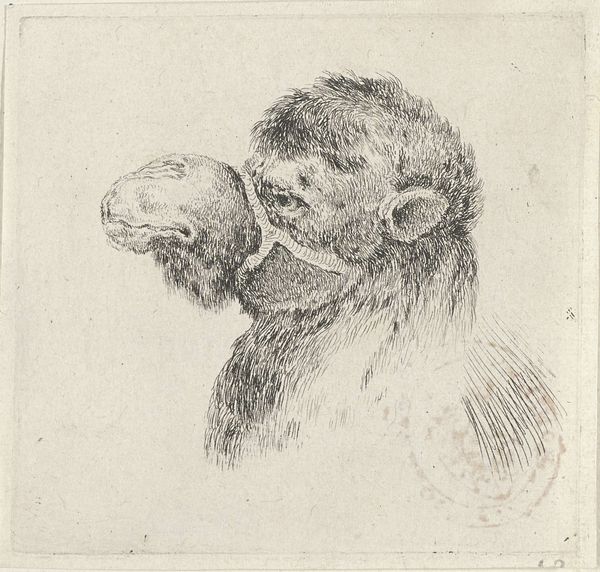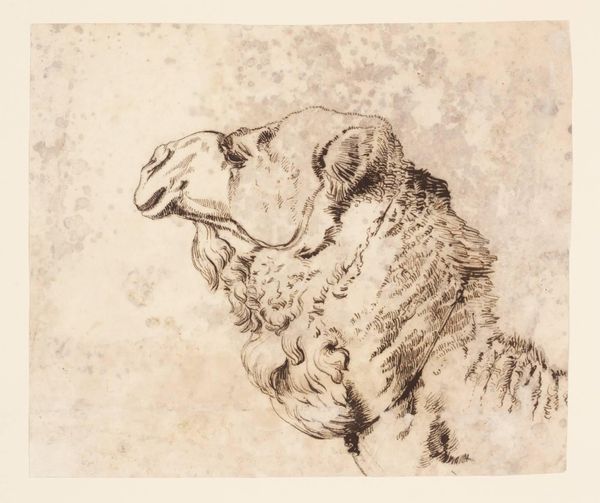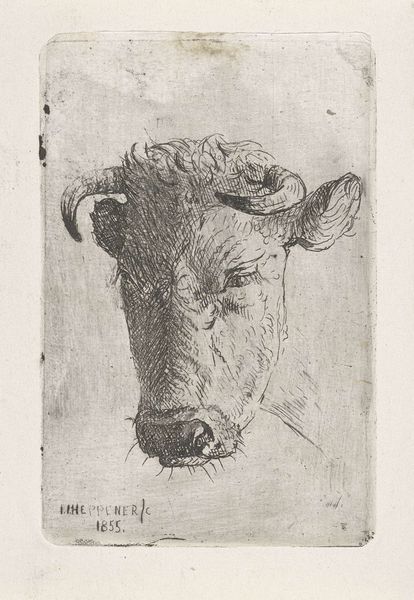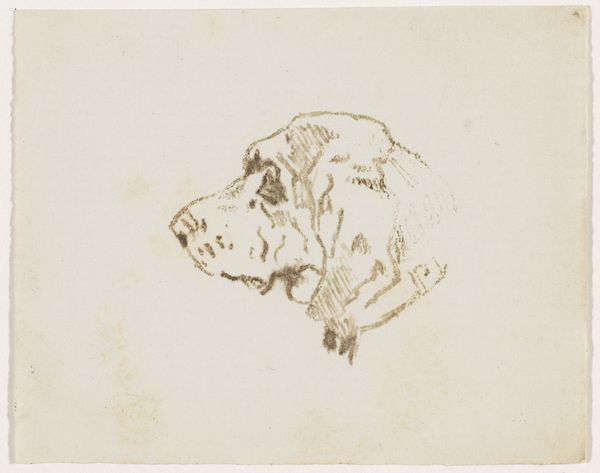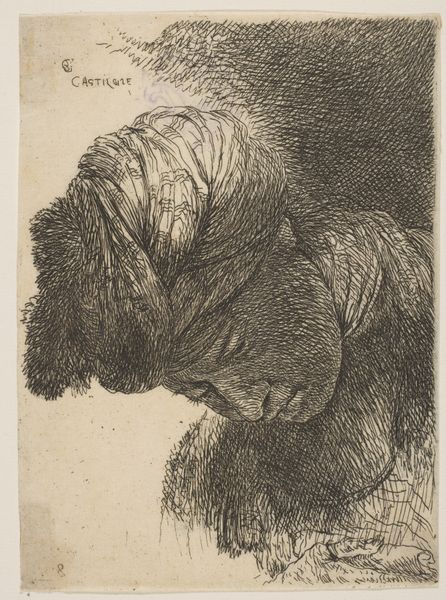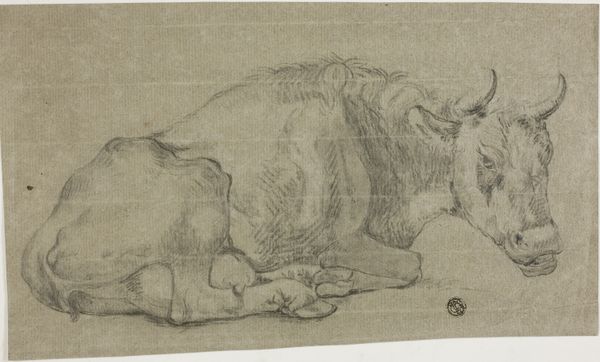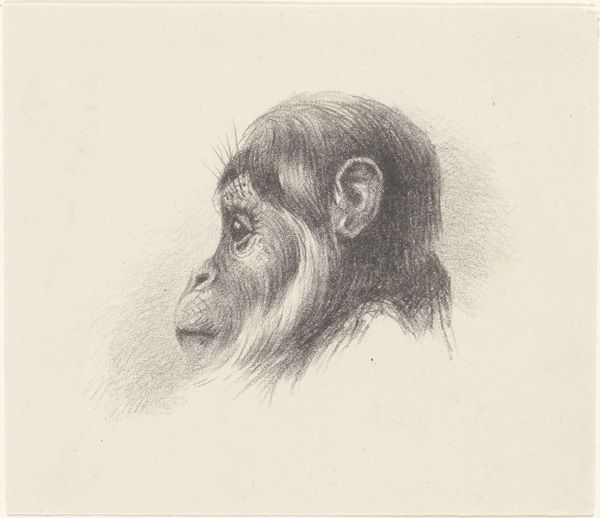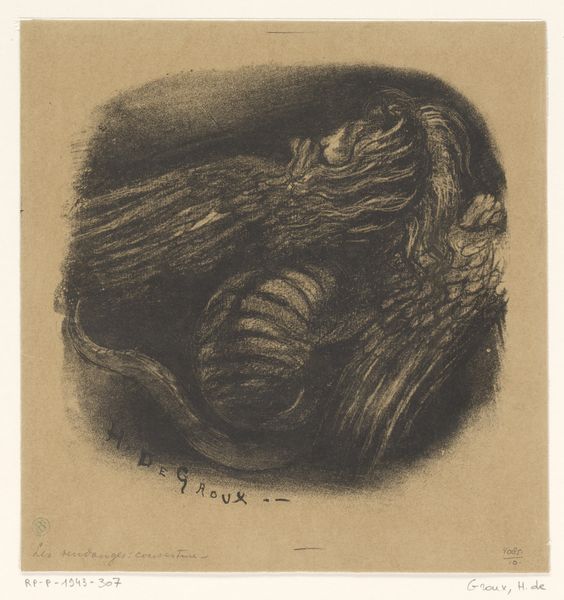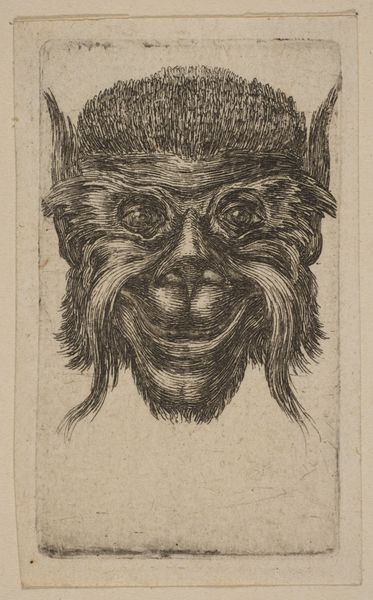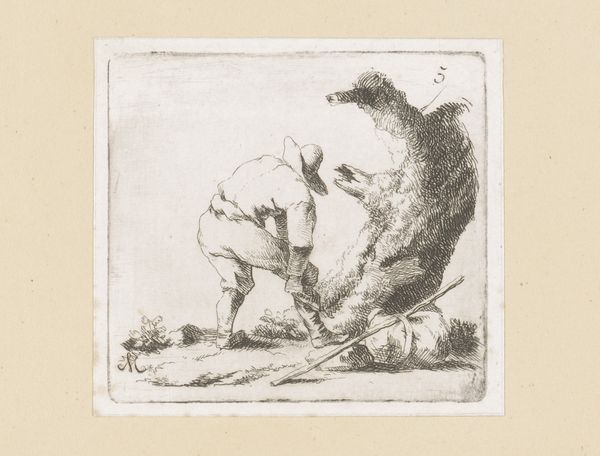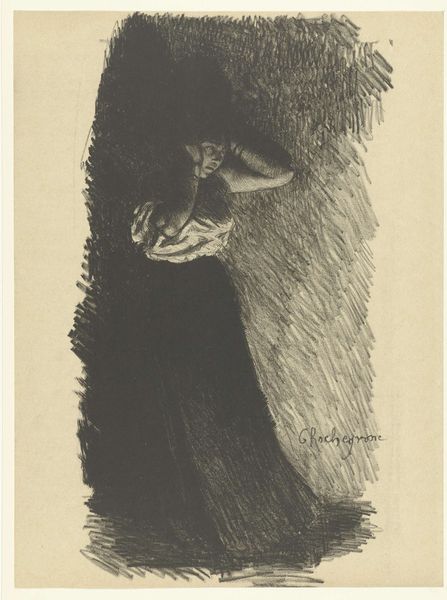
drawing, ink
#
portrait
#
drawing
#
amateur sketch
#
light pencil work
#
pen sketch
#
pencil sketch
#
ink
#
ink drawing experimentation
#
pen-ink sketch
#
botanical drawing
#
sketchbook drawing
#
pencil work
#
realism
#
initial sketch
Dimensions: height 82 mm, width 81 mm
Copyright: Rijks Museum: Open Domain
This small print, "Head of a Camel," was made by Paulus Charles Gerard Poelman sometime before 1846 using etching. The controlled corrosion of metal to produce an image is central to understanding this work. Lines are drawn into a waxy ground, the plate is submerged in acid, and then the remaining ground is removed and ink applied. This process allows for finely detailed, reproducible images. Notice the painstaking detail used to render the camel's coarse fur. But beyond the surface, etching in this period was connected to burgeoning industries and expanding trade routes. The need for accurate visual records fueled printmaking, while the depicted camel, complete with harness, speaks to labor and global exchange. Thinking about the etcher's labor – the patient, methodical application of line – helps us see this print not just as a picture, but as a physical record of a specific historical moment.
Comments
No comments
Be the first to comment and join the conversation on the ultimate creative platform.
